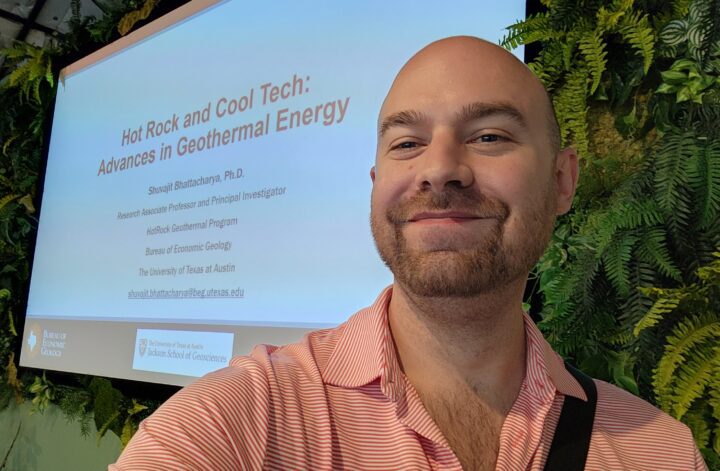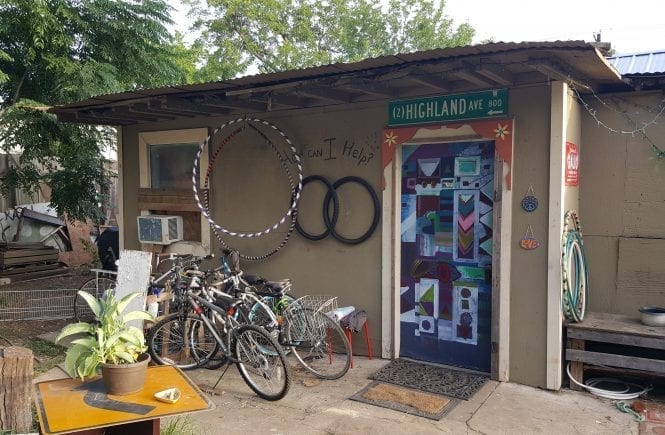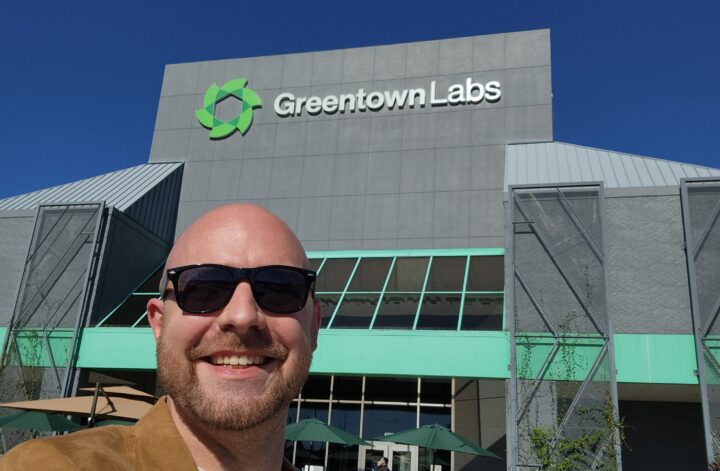The October Austin Climate Innovation panel took a deep dive underground (literally) with this month’s theme: “Hot Rock and Cool Tech: Advances in Geothermal Energy.”
As renewable energy innovation continues to evolve across Texas, geothermal power is quietly heating up as one of the state’s most promising frontiers. The session featured some of the field’s leading voices: Dr. Shuvajit Bhattacharya with the Bureau of Economic Geology at the University of Texas at Austin, and Edward Humes and Timothy Tarver, founder of Exceed GeoEnergy, who shared both the scientific foundations and the business innovation shaping geothermal’s future.
Understanding the Ground Beneath Us: The Bureau of Economic Geology’s Role
Dr. Bhattacharya opened the discussion with an overview of the Bureau of Economic Geology (BEG) — the official geological survey of Texas and one of the three core research units within UT’s Jackson School of Geosciences. As the oldest and second-largest research institute at the university, the Bureau conducts domestic and international studies on energy, environment, and economics, bridging academic research with industry application.
A major initiative he highlighted was the Hot Rock Geothermal Research Consortium, an industry-funded collaboration focused on closing the gaps in science, technology, and economics to develop “geothermal anywhere” systems. The consortium explores hydrothermal, enhanced geothermal (EGS), closed-loop geothermal (CLGS), and thermal energy storage (TES) systems in partnership with academic institutions, private organizations, and federal entities like the Department of Defense and Department of Energy.
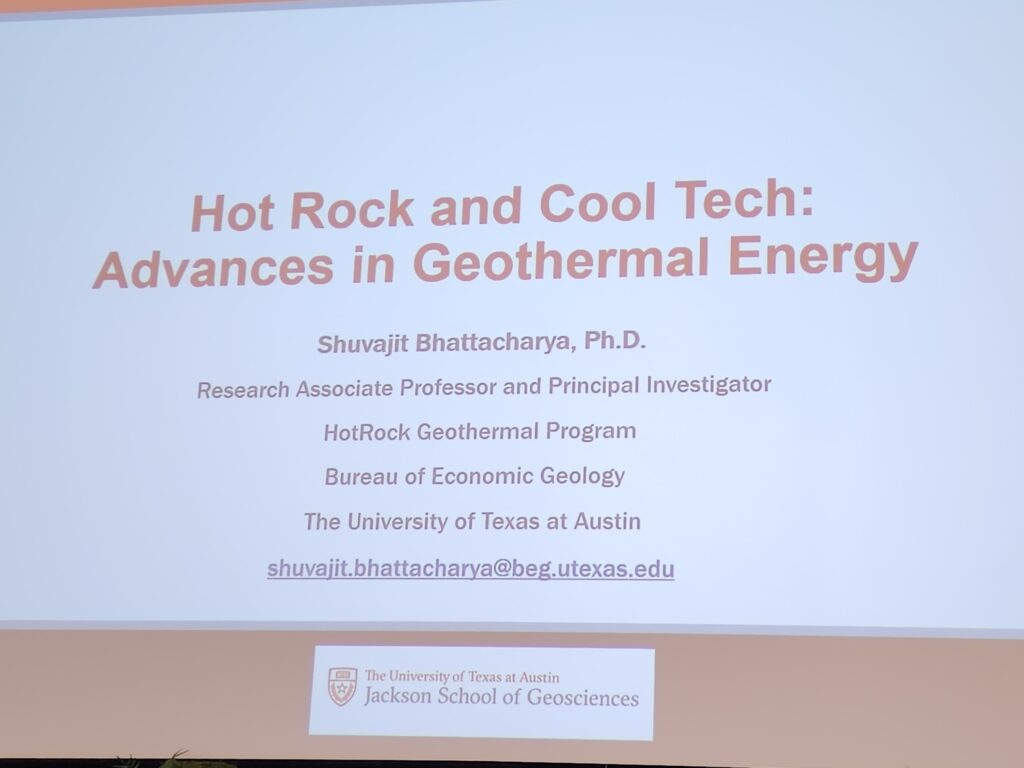
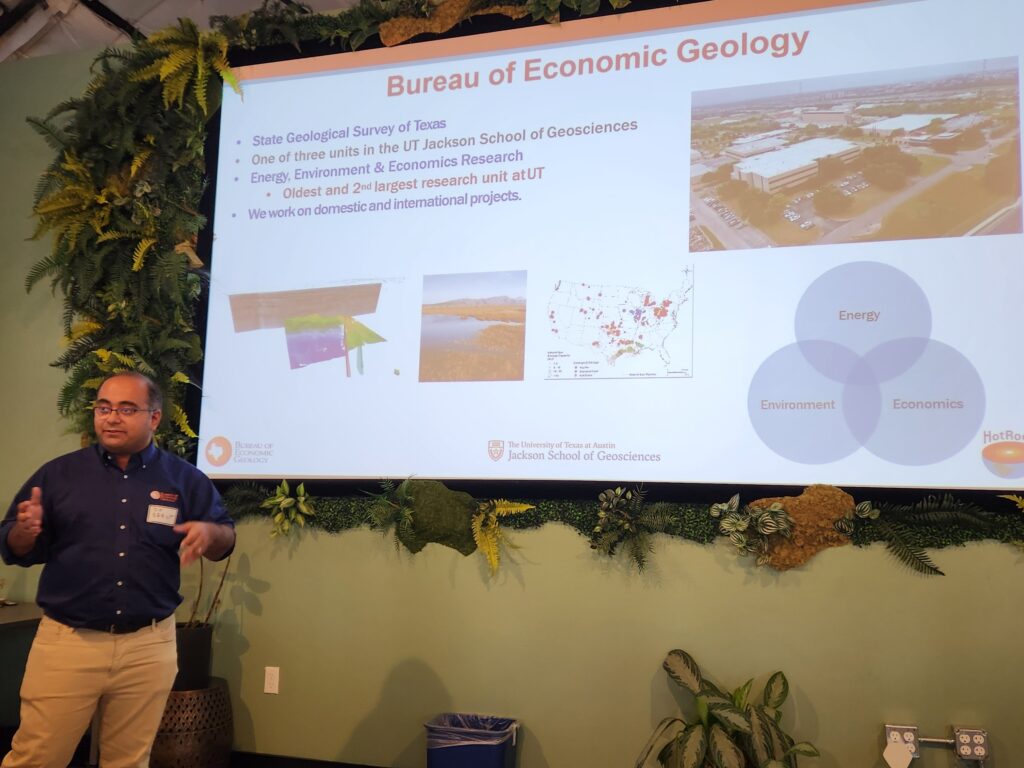
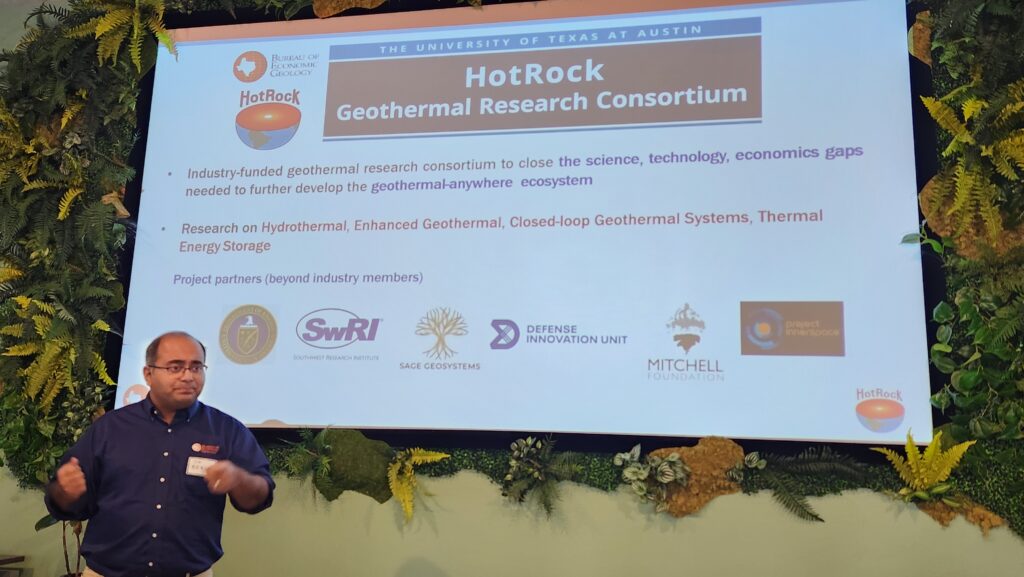
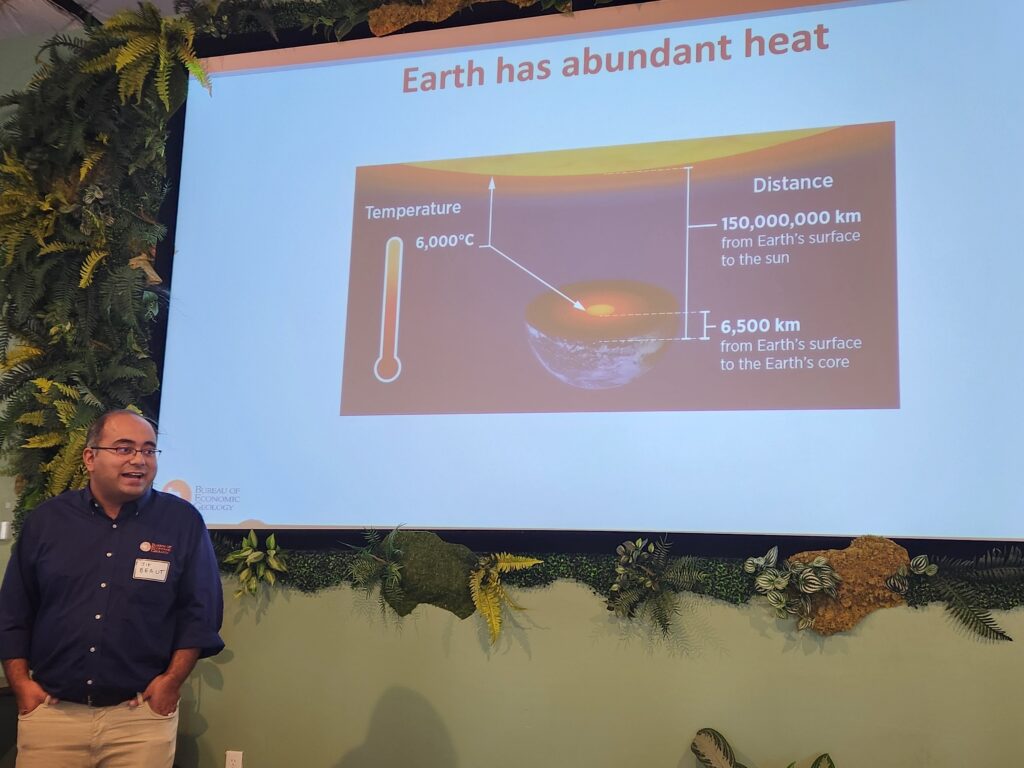
A History Beneath Texas: Early Research and Geothermal Potential
Texas has been exploring geothermal possibilities for decades. Dr. Bhattacharya referenced the Pleasant Bayou geothermal test wells near Houston, drilled in 1979, as an early milestone in geothermal exploration.
He shared data comparing U.S. geothermal electricity generation capacity to that of countries like Indonesia, Turkey, Kenya, and Japan, showing how far the U.S. has to go and how much opportunity remains untapped.
In Texas specifically, geothermal resources are concentrated along the Gulf Coast & East Texas, and the Rio Grande Rift Zone – areas where naturally occurring geothermal heat is most accessible. These regions could eventually supply steady, clean baseload power for the state’s growing energy demand while also supporting cooling infrastructure and industrial applications.
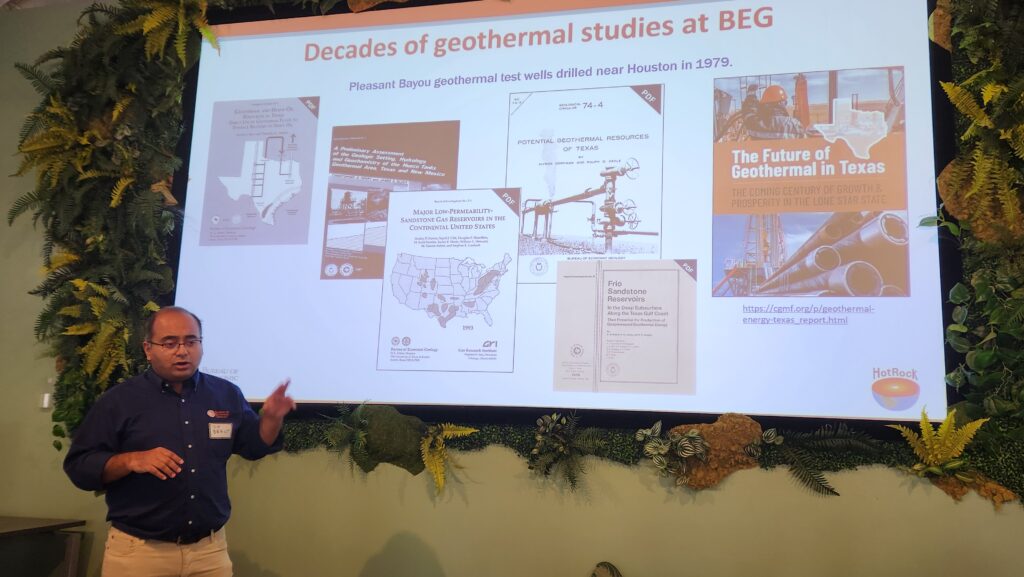
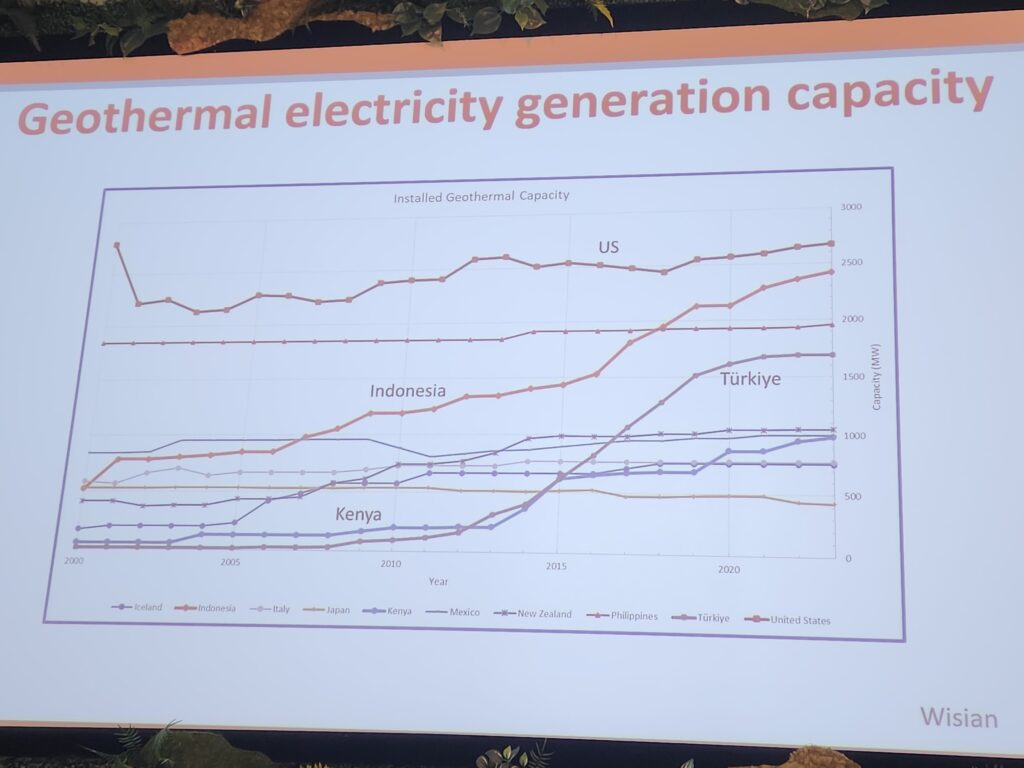
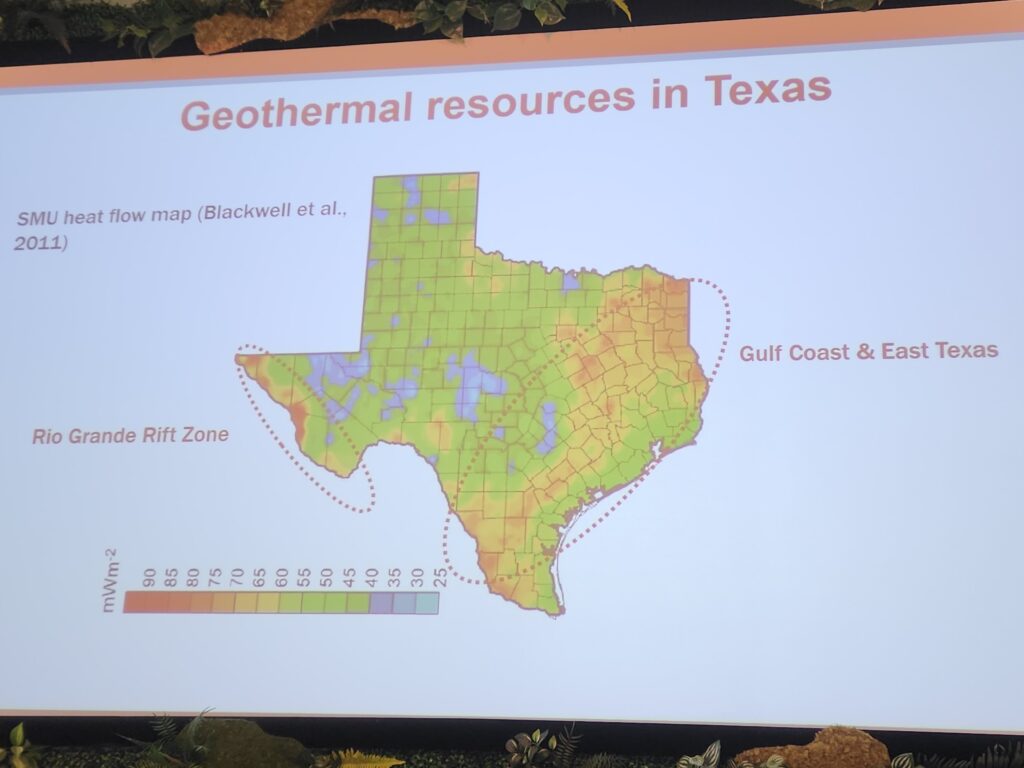
Challenges Beneath the Surface
Despite its potential, geothermal development faces significant technical and geological challenges. Conventional systems often rely on virgin land drilling or retrofitting old oil and gas wells, processes riddled with uncertainty. Issues such as variable flow rates, mineral scaling, and calcification in pipelines can disrupt operations and drive up costs.
Dr. Bhattacharya emphasized that overcoming these barriers requires innovation, not just in drilling technology, but also in data modeling, materials science, and multi-sector collaboration to reduce risk and increase viability.
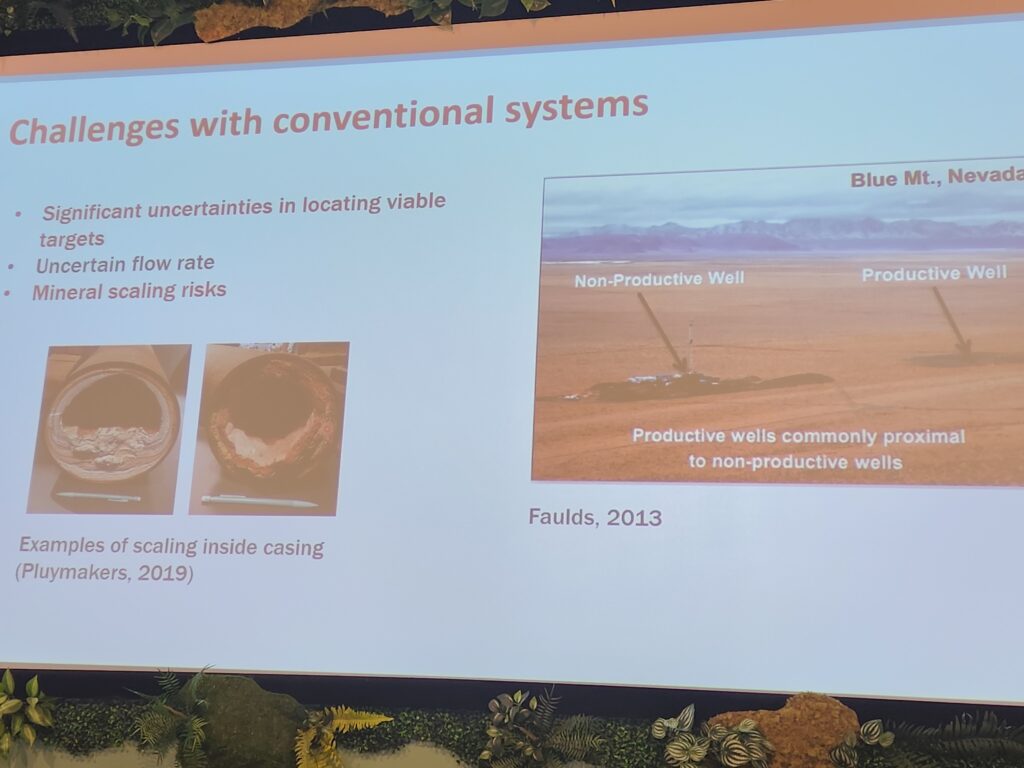
New Tech, New Energy: The Rise of Enhanced and Closed-Loop Systems
Recent breakthroughs have expanded geothermal’s horizons beyond traditional hydrothermal systems. Emerging models like Enhanced Geothermal Systems (EGS), Closed-Loop Geothermal Systems (CLGS), and Thermal Energy Storage (TES) are demonstrating that geothermal can be viable in far more locations than previously thought, even without naturally occurring hot water reservoirs.
Texas, in particular, is poised to lead this transformation. The Gulf Coast region already boasts a skilled energy workforce, abundant subsurface data, and a regulatory framework supportive of energy innovation. With academic institutions like UT backing research and major private investment pouring in, the foundation for a geothermal revolution is forming right here in the Lone Star State.
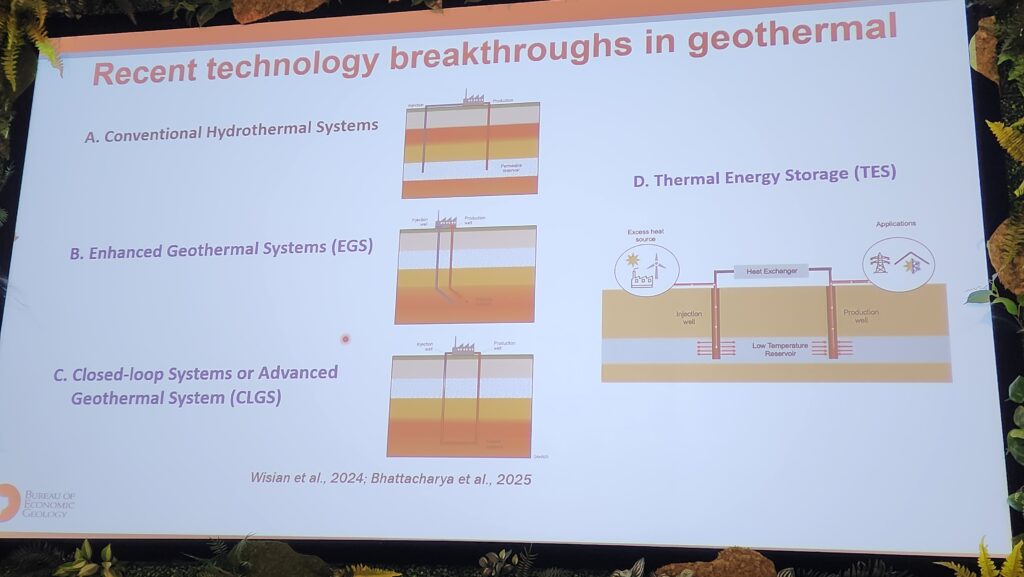
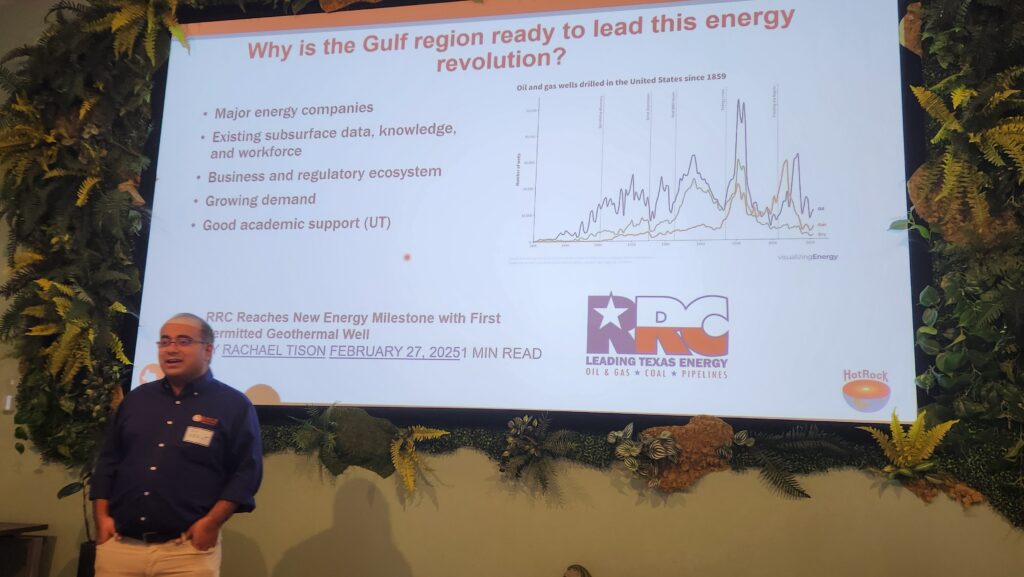
From Hot Rocks to Cool Tech: Exceed GeoEnergy’s Carbon-Negative Approach
Transitioning from research to real-world application, Timothy (Tim) Tarver and his team at Exceed GeoEnergy showcased how their company is reimagining geothermal power through CO₂-based circulation systems.
Unlike conventional geothermal methods that can rely on water, Exceed uses supercritical carbon dioxide in a closed-loop system, simultaneously generating clean energy and carbon-negative sequestration. This dual benefit positions Exceed at the forefront of what Tarver described as the “gold rush” for geothermal technology.
He noted that the real winners in this emerging industry will be those who master the intersection of energy, data, and technology – including organizations like cloud computing providers, GPU manufacturers, and AI startups integrating geothermal into their sustainability strategies.
With a team that has drilled more than 25 geothermal wells worldwide and over 150 years of combined geological energy expertise, Exceed’s mission is to pioneer scalable, affordable, carbon-negative geothermal power for global applications. Their systems aim to power not only grids, but also AI data centers, greenhouses, refrigeration systems, and heat exchangers, making geothermal a foundational technology for both the clean energy and digital revolutions.
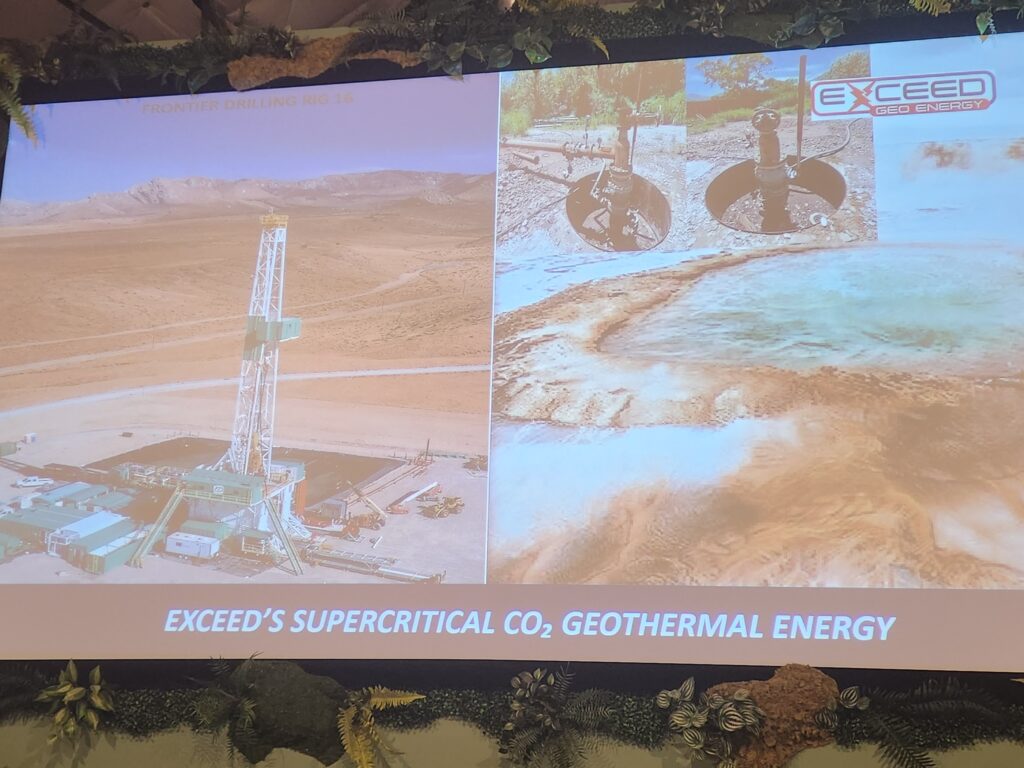
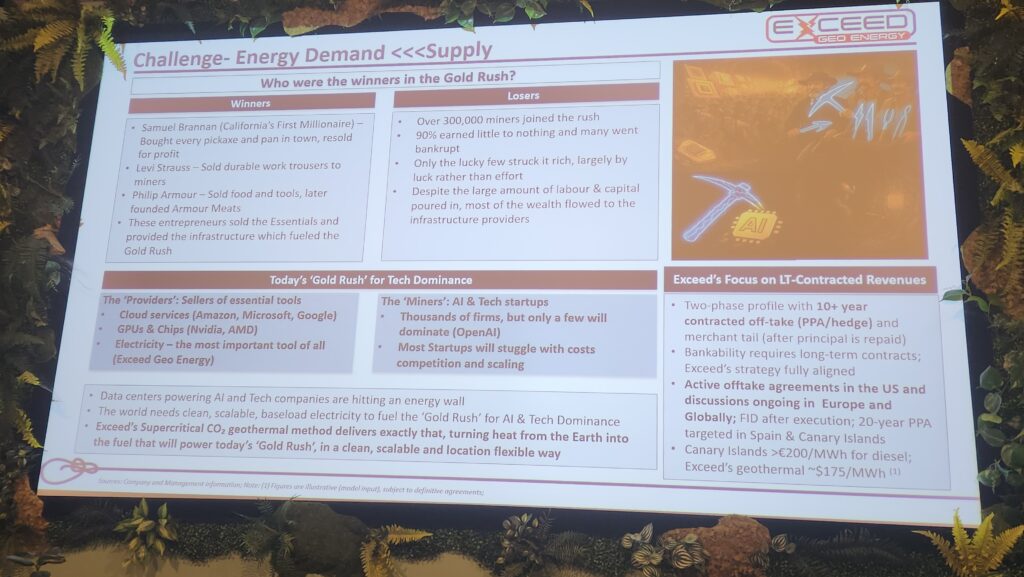
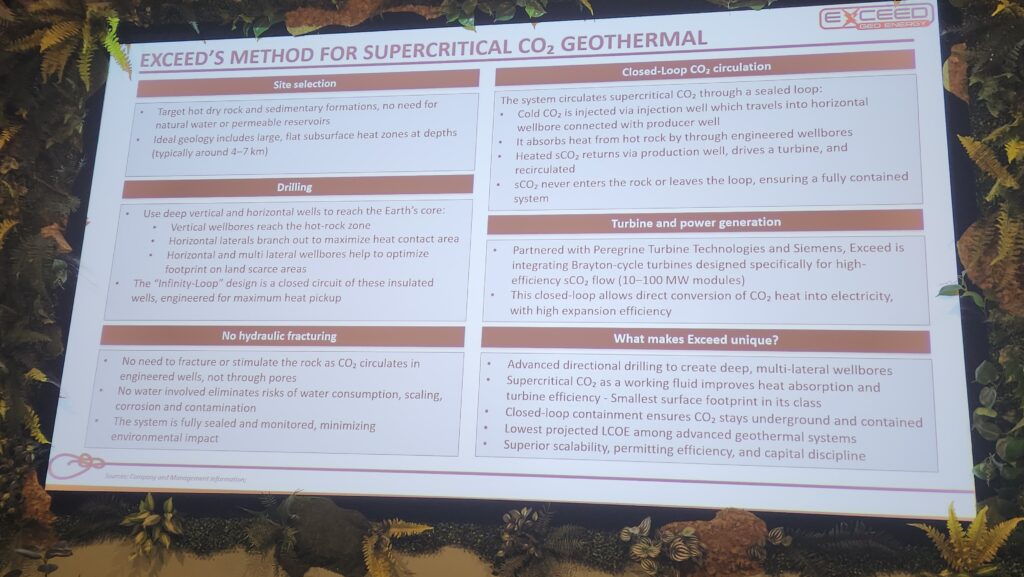
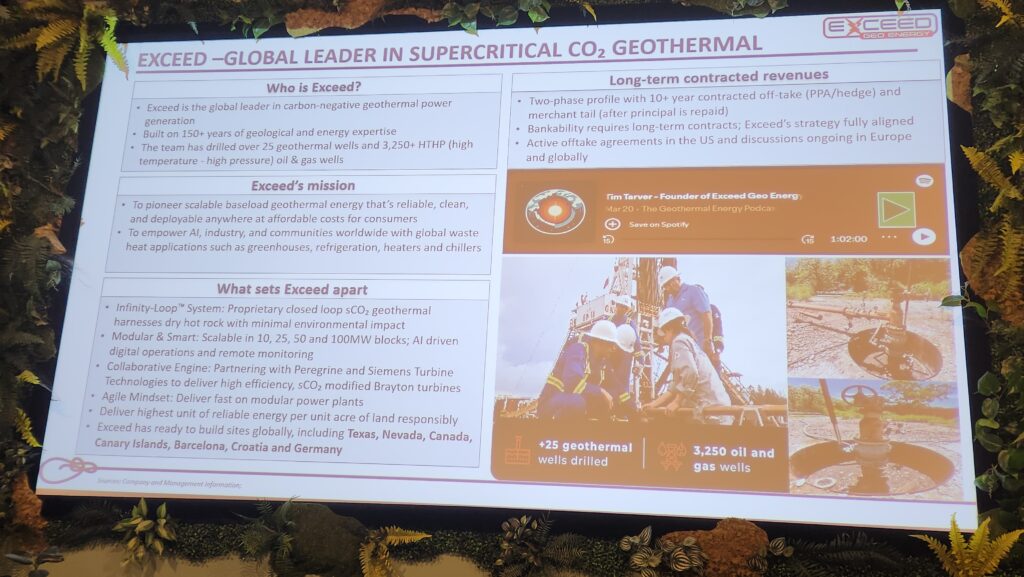
The Takeaway: Texas is Heating Up – Literally
The panel’s biggest takeaway? Texas is ready to jump on the geothermal charge. With its deep energy expertise, abundant geological resources, and a growing clean-tech ecosystem, Texas has all the right ingredients to become a national hub for geothermal innovation.
From UT’s research labs to companies like Exceed GeoEnergy, the “hot rock” revolution is more than a hypothetical science project — it’s a glimpse at how Texas might redefine its role in the global energy landscape.
Final Thoughts
As someone deeply invested in sustainability and environmental communication, it’s inspiring to see Texas’ energy evolution continue below the surface, both figuratively and literally. The geothermal conversation is no longer about if it will happen, but how fast it can scale to meet the people’s growing needs while reducing our energy footprint.
The future of clean, reliable, carbon-negative energy might just be the heat that’s been beneath our feet all along.
*Content was generated with AI based on my notes and direction, then edited and refined by me for accuracy.

